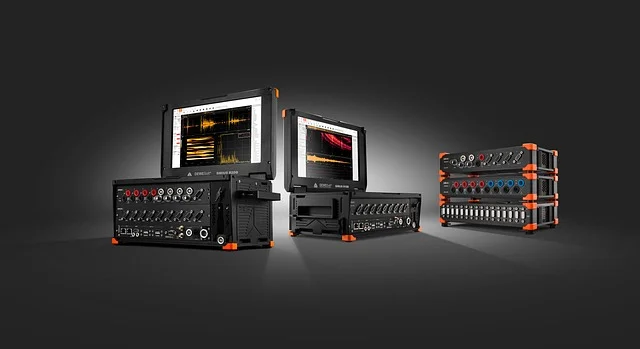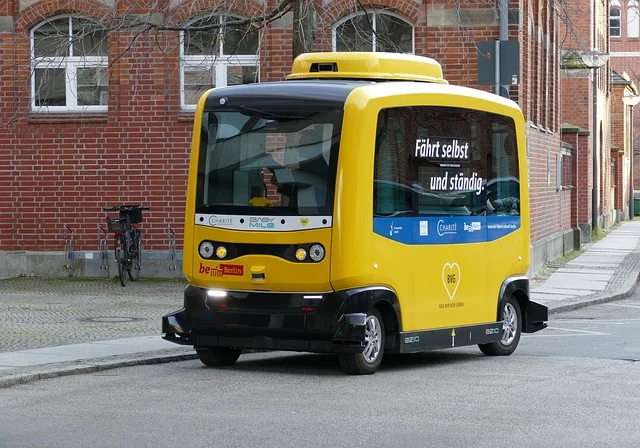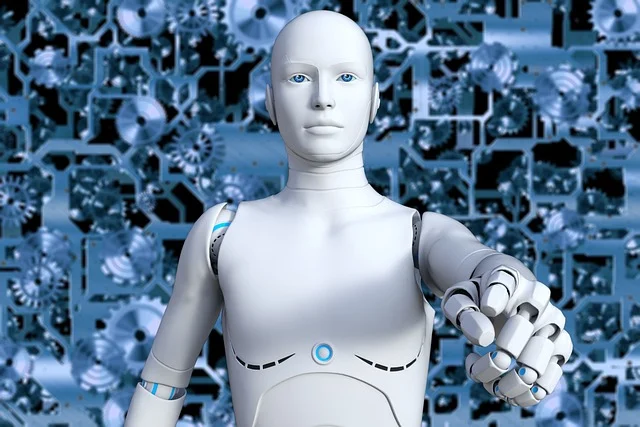AUTONOMOUS SYSTEMS
TRANSFORMING LOGISTICS, TRANSPORTATION, AND MANUFACTURING

The rise of autonomous systems has heralded a new era of technological evolution. Self-driving vehicles, drones, and robotics are redefining how industries operate, and as these systems become more advanced, their transformative impact on sectors such as logistics, transportation, and manufacturing is becoming increasingly evident. Autonomous systems, by definition, are designed to operate without direct human intervention. They rely on cutting-edge technologies, including artificial intelligence (AI), machine learning (ML), computer vision, advanced sensors, and sophisticated algorithms, to make real-time decisions and interact with their environments.
While many of these innovations are still in testing and development stages, they hold great promise for the future, with the potential to reshape global economies, reduce operational costs, improve efficiency, and create safer and more sustainable environments. In this article, we explore how autonomous systems are revolutionizing three critical industries: logistics, transportation, and manufacturing. We also examine the challenges these technologies face and the opportunities they present.
The Rise of Autonomous Vehicles

One of the most prominent applications of autonomous systems is in the field of self-driving vehicles (SDVs). These vehicles are equipped with a variety of technologies such as LiDAR sensors, radar, cameras, and AI-based decision-making systems that enable them to navigate complex environments and make decisions without human input. The development of autonomous vehicles has the potential to fundamentally change the way people commute, goods are transported, and services are delivered.
1.1 Self-Driving Cars
Self-driving cars have captured much of the public’s imagination and are among the most well-known examples of autonomous vehicles. Companies like Tesla, Waymo, Cruise, and Uber are leading efforts to bring autonomous cars to the mainstream. The potential benefits of these vehicles are far-reaching and include:
- Safety: One of the primary advantages of autonomous cars is the potential to significantly reduce accidents caused by human error. In fact, a significant percentage of car accidents today are the result of distractions, speeding, impaired driving, and fatigue. Autonomous vehicles, however, can drive with consistent attention to the road, continuously monitor their surroundings, and respond to sudden obstacles or changes in the environment. This could lead to fewer accidents and injuries, ultimately saving lives.
- Efficiency and Traffic Flow: Autonomous cars can optimize their routes and driving behaviors by communicating with other vehicles and infrastructure such as traffic lights and road signs. This can reduce traffic congestion, improve fuel efficiency, and shorten travel times. Self-driving vehicles have the potential to drastically reduce bottlenecks and inefficiencies that are a hallmark of human-driven traffic systems.
- Mobility for All: Autonomous vehicles also promise to provide solutions to individuals who cannot drive due to age, disability, or other reasons. The elderly and people with mobility impairments could particularly benefit from autonomous cars, making transportation more inclusive and accessible.
However, the widespread adoption of self-driving cars faces significant hurdles. Legal frameworks and regulations for autonomous driving are still being developed across the world, and safety concerns, particularly in urban environments where there is a high density of human drivers, are paramount. Public trust and acceptance of self-driving cars are also major factors that need to be addressed before these vehicles become a commonplace mode of transportation.
1.2 Autonomous Trucks and Delivery Vehicles
While self-driving cars have garnered most of the media attention, autonomous trucks and delivery vehicles may have an even greater impact on the economy, particularly in the logistics and transportation sectors. Autonomous trucks are expected to revolutionize freight transportation by improving efficiency, reducing costs, and enhancing safety.
- Long-Distance Freight: Self-driving trucks are already being tested on long-haul routes, which offer a compelling application for autonomous technology. These trucks can operate during off-peak hours or overnight, reducing traffic congestion and delivering goods more quickly. Autonomous trucks also eliminate the risk of driver fatigue, a major cause of accidents in long-distance driving.
- Last-Mile Delivery: Autonomous delivery vehicles—ranging from small self-driving vans to drones—are increasingly being deployed for the “last mile” of the supply chain. This refers to the final leg of product delivery, from a central warehouse to the consumer’s doorstep. Companies like Amazon are already testing drone delivery services, which can quickly transport small packages, bypassing road traffic and improving efficiency.
Despite the promise of autonomous trucks and delivery vehicles, there are concerns regarding the displacement of human workers, especially truck drivers, and regulatory challenges related to long-distance routes, infrastructure, and airspace usage for drones. Moreover, the technology for these systems still requires refinement to deal with dynamic, unpredictable road conditions and environments.
Drones: A New Era of Aerial Autonomy

Drones—also known as unmanned aerial vehicles (UAVs)—are one of the most exciting innovations in the field of autonomous systems. While drones were initially developed for military purposes, they have since found commercial and industrial applications. Drones are increasingly being used in sectors such as logistics, healthcare, agriculture, surveillance, and infrastructure inspection.
2.1 Applications in Logistics and Delivery
Drones are well-suited for the logistics and delivery industries. By leveraging their ability to fly over congested urban areas, drones can drastically reduce delivery times and cut down on operational costs.
- Package Delivery: Drones can transport small packages from distribution centers directly to consumers, bypassing traffic congestion. This technology is particularly beneficial for delivering products in densely populated cities or regions with challenging geography, such as mountainous terrain. Amazon, for example, is already exploring the use of drones to deliver packages in urban and suburban areas.
- Warehouse Management: Drones can also be used for inventory management in large warehouses. Equipped with cameras, barcodes scanners, and sensors, drones can fly through aisles to track inventory, monitor stock levels, and even identify discrepancies. By automating these tasks, drones reduce the need for human labor and enhance operational efficiency.
- Medical Supply Delivery: Drones are increasingly being used to deliver critical medical supplies, such as vaccines, blood, and medicine, especially to remote or inaccessible areas. The company Zipline has been successful in deploying drones to deliver medical supplies in countries like Rwanda and Ghana, where traditional transport infrastructure may be lacking.
Despite their promise, the widespread use of drones faces regulatory challenges related to airspace management, privacy concerns, and safety risks. Governments worldwide are working to develop appropriate policies to regulate drone usage and ensure safe integration into existing air traffic systems.
2.2 Surveillance, Agriculture, and Infrastructure Inspection
In addition to logistics, drones are making a significant impact in surveillance, agriculture, and infrastructure inspection:
- Agriculture: Drones equipped with multispectral sensors are being used to monitor crop health, detect pests, and assess soil conditions. This enables farmers to implement precision agriculture, where resources such as water and fertilizer are used more efficiently, leading to improved crop yields and reduced environmental impact.
- Infrastructure Inspection: Drones are being employed to inspect hard-to-reach infrastructure such as bridges, power lines, oil rigs, and telecommunications towers. Equipped with high-definition cameras and sensors, drones can capture real-time data, allowing for faster and safer inspections compared to traditional methods that require human workers to scale dangerous heights or enter hazardous areas.
Robotics in Manufacturing: Efficiency and Precision
Robotics has been integral to the manufacturing sector for decades, but the new generation of autonomous robots is poised to revolutionize how factories and warehouses operate. These robots utilize AI, ML, and advanced sensors to automate tasks previously performed by human workers, increasing efficiency and precision.
3.1 The Rise of Collaborative Robots (Cobots)
Unlike traditional industrial robots, which often operate in isolated environments due to safety concerns, collaborative robots (cobots) are designed to work alongside human workers in shared spaces. These robots are equipped with sensors and safety features that allow them to operate safely in proximity to humans.
- Enhanced Productivity: Cobots are often used for tasks like assembly, packaging, and quality control. By automating repetitive tasks, cobots free up human workers to focus on more complex and creative tasks, leading to improved overall productivity and a reduction in labor costs.
- Cost-Effective Automation: Small and medium-sized manufacturers, who may not be able to afford large-scale automation, are increasingly adopting cobots. These robots are smaller, more flexible, and easier to program, making them a cost-effective automation solution.
3.2 Autonomous Mobile Robots (AMRs)
Autonomous mobile robots (AMRs) are a new generation of robots designed to move materials, products, and goods autonomously throughout factories, warehouses, and distribution centers.
- Warehouse Automation: Companies like Amazon, Alibaba, and Tesla have implemented AMRs to automate warehouse operations. AMRs are used to transport materials, pick products, and even sort packages, allowing warehouses to run 24/7 without the need for human labor.
- Manufacturing Lines: In factories, AMRs are used to move raw materials, components, or finished goods between production lines, eliminating the need for forklifts and other human-driven equipment. This ensures that production lines remain efficient and that there are no bottlenecks.
While autonomous robots are already improving manufacturing efficiency, there are still challenges to address, including the integration of robots into existing workflows, safety standards, and the development of robots capable of interacting with human workers in dynamic environments.
Future of Autonomous Systems: Challenges and Opportunities
The future of autonomous systems is filled with both immense potential and significant challenges.
4.1 Regulatory and Ethical Challenges
One of the most pressing obstacles to the widespread adoption of autonomous systems is the lack of regulatory frameworks. Governments need to develop comprehensive laws to govern the safe use of autonomous vehicles, drones, and robots, particularly in areas related to traffic regulations, airspace management, and safety standards. Additionally, there are ethical considerations, such as how self-driving cars should respond in accident scenarios and ensuring privacy when using autonomous surveillance systems.
4.2 Technological Barriers
Autonomous systems rely on complex technologies such as AI, computer vision, and machine learning, which still have limitations









